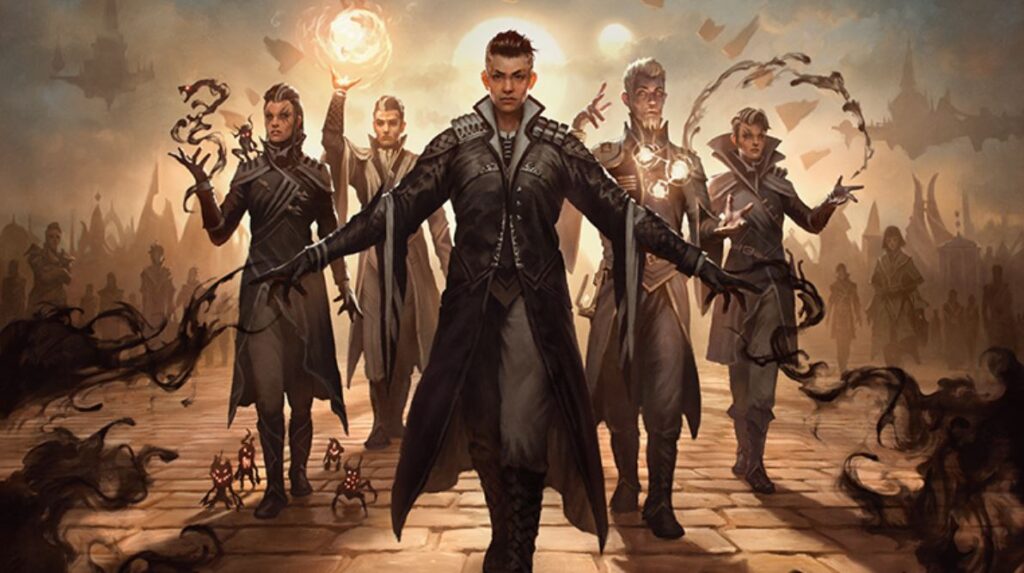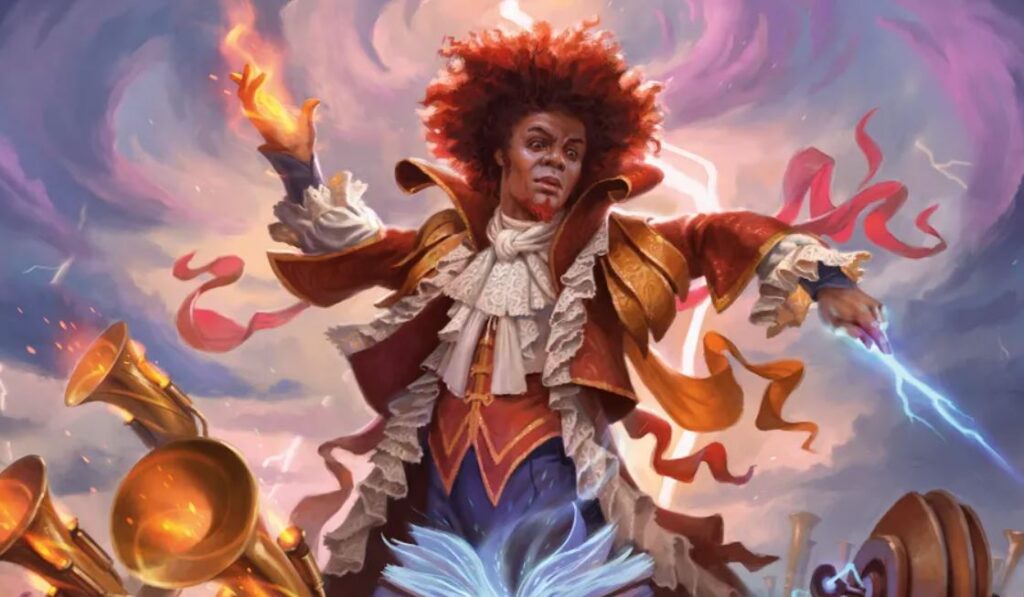
Strixhaven offers a new sort of Magic to an old setting
When Strixhaven: School For Mages was first revealed as an upcoming standard set for Magic, there was one comparison that, even sight-unseen, the new cards couldn’t avoid: Harry Potter.
If you take your magical world into a school for wizards, then the Harry Potter franchise will probably be the first words to come out of somebody’s mouth; there were YouTube videos of fake cards that basically gave Harry Potter characters facelifts, and rumours of a Secret Lair drop that explicitly turned the characters from Strixhaven into the ones from J.K. Rowling’s series of novels. If you didn’t know, Secret Lair is one of the ways that Wizards creates crossovers between Magic and other franchises, whether it’s taking their own titans of Theros and reimagining them in the viking metal art of Kaldheim, or the recent – controversial – crossover with The Walking Dead, Secret Lair takes the multiverse of Magic and merges it with other franchises.
While it would make perfect sense for Strixhaven to cross over with Harry Potter, there doesn’t seem to be anything like that in the offing, and this is only good news for Wizards; obviously the recent – to use the democratic term – controversies that Harry Potter’s author has been mired in for what seems like forever now are worth avoiding attaching your brand to. But beyond that, to turn Strixhaven into Hogwarts would undercut the unique magic, and appeal, of Magic’s latest plane.

When Magic explored Norse myth in Kaldheim, it was Niko, one of the characters from the Greek plane of Theros who ended up getting a lot of attention as Magic’s first non-binary planeswalker. Strixhaven feels like a continuation of some of the world-building that existed in Kaldheim; a way of using magical spaces to explore themes of identity and inclusion. That’s what makes the spectre of Harry Potter – and the inevitable comparisons likely to be drawn between it and Strixhaven. Something which is an interesting thing for the new set to navigate.
It would be naive to assume that Wizards paid too much attention to the fallout surrounding Rowling, and how that might have impacted their own magical school. But with Strixhaven coming out in the wake of Rowling’s many (many, many) decisions to align with TERF ideology, it makes the way that this new plane is built feel vital and important, especially as Wizards slowly continues to – deliberately or not – rebuild goodwill with queer players. Especially with the problems surrounding the Magic novel War of the Spark: Forsaken, and the extent to which it engaged in queerbaiting with two of its most iconic characters, and how in an MPL tournament Wizards asked Autumn Burchett – a non-binary competitive Magic player – to remove basic land cards from their deck, defaced to include the phrases “No TERFS on Gruul turf,” and “trans rights are human rights.”
Even so, Strixhaven as a set never takes any explicit references to trans rights. This is something that feels striking in the context of the Gatherer event, which is full of tongue-in-cheek references to Magic’s history as a competitive game; one of the campus walls has one of the colleges petitioning for Splinter Twin to be unbanned in Magic’s Modern format. This makes the lack of acknowledging the controversy surrounding Burchett’s defaced basic lands seem like a missed opportunity.
The Gatherer event before the launch of Strixhaven foregrounded one of the things that the designers of the set felt was most important: the experience of learning. From the buildings themselves, to how fan-favourite characters appear – the necromancer planeswalker Liliana appears here attempting to reinvent herself as Professor Onyx – makes it clear that Strixhaven is about, above all else, (re)discovery. There are several video Q&As with Magic designers scattered throughout the Gatherer world of Strixhaven; in one of them, Doug Beyer (a lore and world-building designer) reinforces some of these ideas, saying “we didn’t want closed doors, we wanted the feeling that everyone is welcome to this institution of higher learning.”

The important thing about Strixhaven is that it adheres to the same vital truth that made Kaldheim such a compelling world to visit: the understanding that a world being rooted in a certain historical period, or genre tradition, doesn’t mean there’s no room to make it contemporary. In many ways it’s the opposite, by moving through myth and fantasy staples, Magic has the opportunity to make these worlds relevant in new ways.
When it comes to the major themes of the Plane, Strixhaven is the polar opposite of Kaldheim: while the Viking world was obsessed with history and heroes, the School for Mages is about the opportunity to learn about not only who you are, but who you have the potential to be. This approach to narrative feels uniquely resonant when it comes to the queer community and their relationship with Magic; to be presented a world that’s designed to be open and welcoming, and tries to instil in its characters – and by extension, players – that you have the potential to be whoever you want, no matter where you come from. After all, people come from literally all over the Multiverse to study at Strixhaven. While the world doesn’t feel explicitly queer, these themes have a power that feels unique for the queer community, the ability to find your own people, and yourself along the way.
The Gatherer journey into Strixhaven was striking because of the lightness of touch that it displayed – jokes on whiteboards about unbanning Splinter Twin, designing animated versions of mages from these colleges that look like characters from Big Mouth – and this exists, for better and for worse, in tandem with the openness that defines the world of Strixhaven. The desire to keep the world open, to have anyone be welcome, is a commendable one, and while it shares some DNA with Kaldheim in this respect, it doesn’t dive into it with a character like Niko. The self-awareness in Gatherer – and even in the new version of Liliana, and some of the ways the set describes her – are fun, but could have been used to go into more detail about what the openness of Strixhaven looks like compared to the way the game – and Wizards – have acted in the past.
There’s some legitimate magic to be found in Strixhaven – made all the more striking and powerful by the distance it currently has from a certain young wizard – the hope is that it stays this way, rather than simply becoming an illusion.







